Screen printing or digital: is it a synergy possible ? We ask it to an expert of screen inks and machines production : Gianpaolo Coin, CEO of Grafco.
For screen printing experts, digital printing has aroused great interest since the nineties, as it made possible to print in high resolution a wide range of fabrics and with excellent flexibility in image changing without investments in screens or plates.
As digital printing screen printers consider only the inkjet because other technologies require too high costs for equipment and their maintenance. And inkjet can give higher ink deposition.
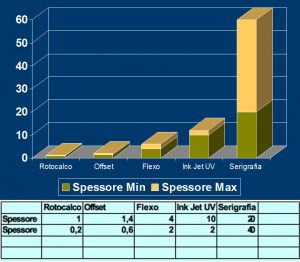 So, what kind of synergies are possible between screen printing and digital printing ?
So, what kind of synergies are possible between screen printing and digital printing ?
G. Coin – Firstly, we have considered the “strong” and “winning” features of silk-screen printing technology for textiles; so on this basis we have reasoned in what are the features of the screen printing that can support inkjet printing. From these considerations we have identified some “winning features”.
Which ones ?
Screen printing is able to deposit on any flat surface or textile fabric any compound with the desired thickness. As a result, screen printing can quickly and easily allow very opaque results even on dark surfaces of flat surfaces or textiles.
Well, but given the advantages of inkjet printing, what are the technological and innovation implications for digital printing in screen printing ?
We have been dealing with this topic for years and our laboratory is now able to provide specific products based on UV, solvent or water based inks for the textile industry, which thoroughly optimize the performance of inkjet printing.
In practical terms ?
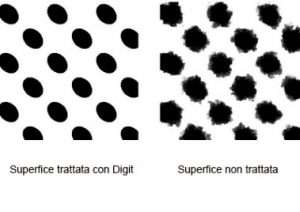
Effects of a treatment with Digit
In practice, we have made a great deal of testing and fine tuning in our labs to obtain a wide range of compounds that, applied on plastic or textile surfaces, had high fastness and adhesion. When dried, they would prevent ink droplets from expanding after impacting on such surfaces. In short, we have studied and developed special primers to be applied in screen printing on various materials that, when dried or polymerized can offer excellent “inkjet receptive” surfaces.
Can you make some practical examples on these products ?
Our DIGIT S110 primers, which are applied in screen printing, improve adhesion on the various inkjet UV media on plastic materials that have otherwise adhesion problems, and at the same time act as a drop dot to increase the definition and enhance colour rendering.
We know ink formulators continue to research and develop and propose every month more performing inks …
I agree. However, it takes time and because of the complexity of the inkjet business where new print heads are proposed every year, these companies work on a large scale and cannot formulate inkjet inks to meet the specific needs of each customer.
Do you mean that your products are, so to speak, customized ? 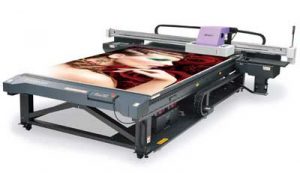
Customized would be too much, but let’s say ‘oriented’. For example, these primers are useful when a customer cannot change the material on inkjet machine or cannot achieve the highest quality by using the inks provided by the machine manufacturer. Or even when he has technical screen printing skills. In each of these cases it is our turn to formulate a compound Digit Primer, specific for screen printing. Then, he will get the best inkjet printing. Sometimes special protection paints, such as the Digit Shield line, are also required for some specific industrial fastness to protect the print.
Today, manufacturers of inkjet machines also point to white mat inks. What about Grafco ?
Absolutely yes. Let me underline that our primers can be produced both transparent and in opaque white to speed up the production. With the use of screen white background, coverage can reach optimal levels. In addition to that, as digital printing use just a CMYK system, in this configuration inkjet equipment can work at maximum production speed.
Did you also develop products for textile garments ?
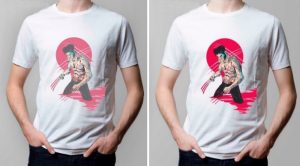
Printing on T-shirt without and with the Digit treatment
Since 2007, Grafco has a department dedicated to formulating water-based inkjet pigment inks for the textile world, so we have also developed treatments (DIGIT W) to be applied in square or cylindrical screen printing on fabrics to improve the results in terms of colour fastness and definition and washing fastness with our pigment inkjet inks when applied over our pre-coating.
I can tell you that we have found out that some of our customers use our pre-treatment with other manufacturers inkjet inks because they could assess the difference in technology behind our compounds. Let’s not forget that these products are the result of a dozen years of optimization in industrial applications.
Can these products also be used for flat machines or new carousels ?
During the last FESPA in Hamburg, virtually every textile printing machine manufacturer has introduced its inkjet print bridge solution mounted on both traditional circular carousel machines and traditional machines for printing T-shirts and garments. It is now clear that the pigment-based inkjet /screen printing combination is the way chosen by textile apparel printing manufacturers to have good production speed combined with an acceptable final print quality and to speed up printing of dark fabrics.
So screen printing is still a technology with chances in perspective …
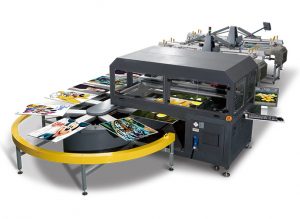
Carousel screen printer
Screen printing, thanks to its “winning features” that I mentioned earlier, is able to offer excellent inkjet printing support solutions. For this reason, Grafco has been developing innovative products for this print technology for years, such as the new ultra-soft discharge primers with ‘inkjet receptive’ properties, or special effects such as glitter or gold / silver effects, always with surfaces that offer excellent properties ‘inkjet receptive ‘.
Pigment inkjet technology also has excellent fabric application possibilities and the combination of these two technologies gives powerful results. According to us, Grafco products and technology are there. Now the last word goes to stylists and creatives. Let me quote Nicolás Gómez Dávila: “The invention of techniques usually precedes the arrival of the artist capable of using them.”



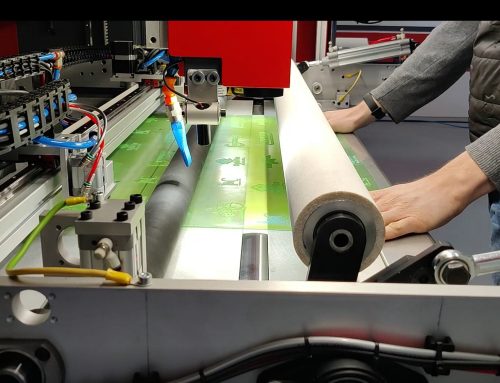
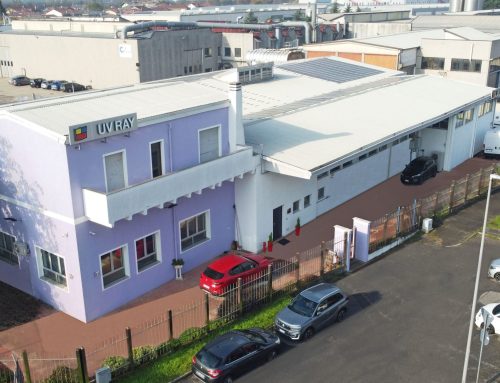

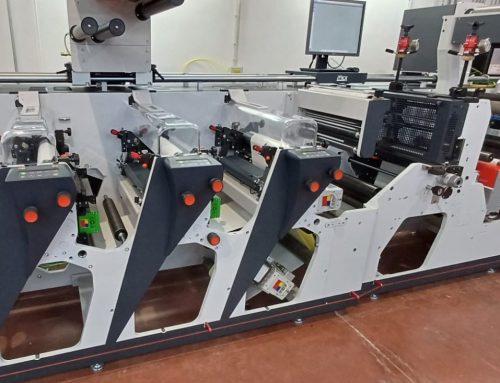
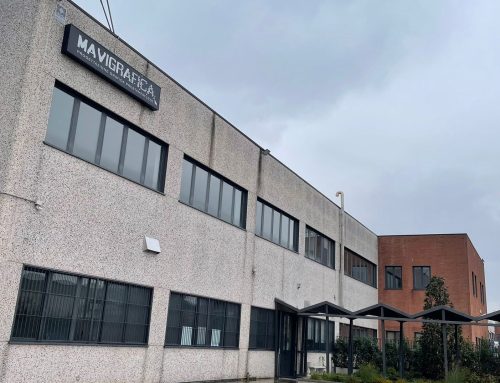
Leave A Comment